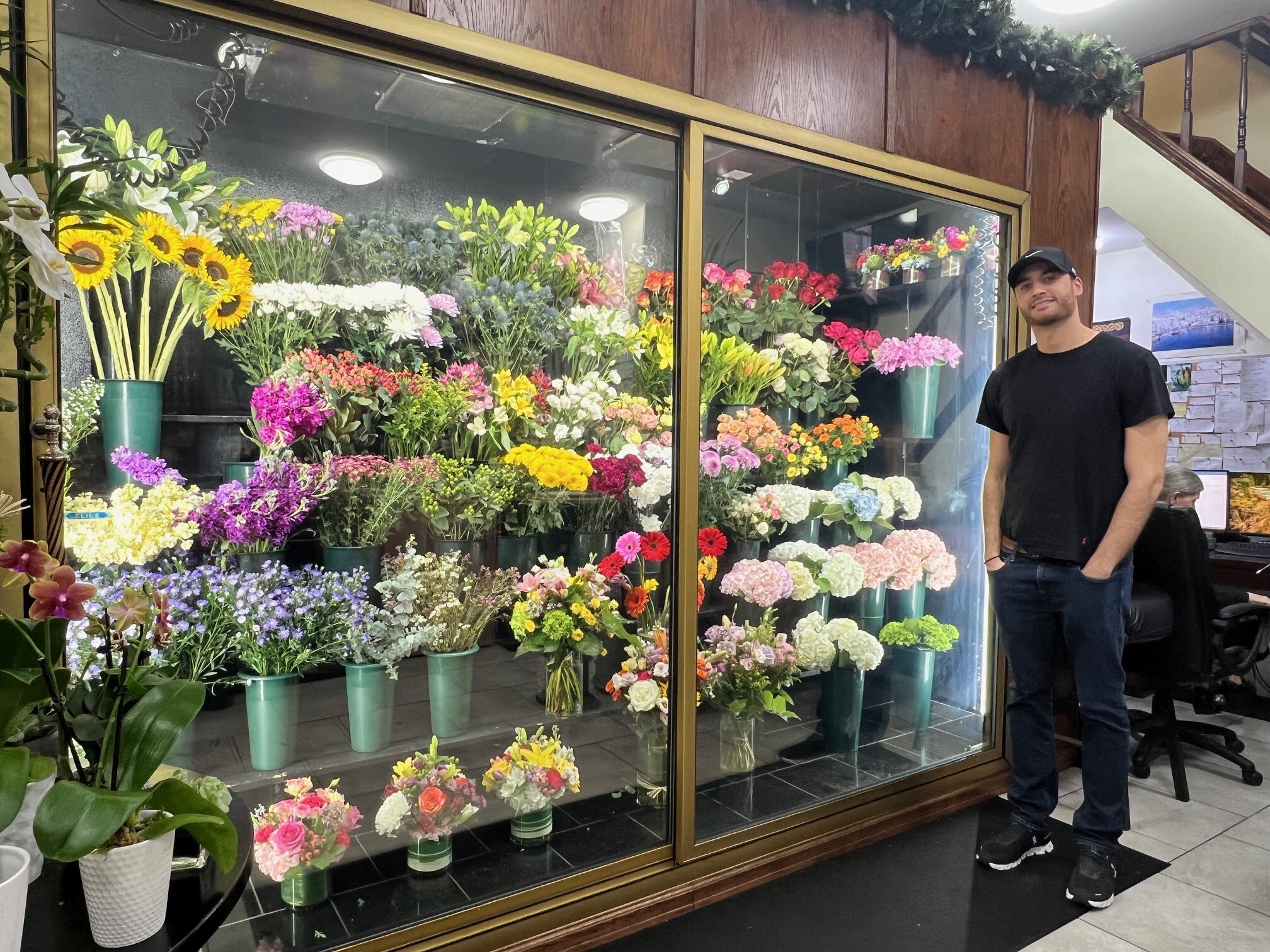At a Starbucks one weekday morning on Wall Street in Manhattan, office workers from nearby buildings joined tourists and area residents with their dogs or strollers waiting in line to order. Come noon, a food hall at the base of an office property — mostly empty about an hour earlier — was able to suddenly fill.
Nearly five years after COVID-19 upended the largest U.S. office market, Manhattan is still recovering from the lack of daily office workers. But signs of improvement are becoming more visible: Some small local business owners, reliant on sales to those in nearby offices, say 2024 was the best year since the pandemic hit the United States.
Just ask Mike Saeteros, owner of K&M Shoe Repair at 55 Nassau St. in the Financial District. He said sales have recovered to about 50% to 60% of the regular receipts he saw prior to the pandemic, up from a low of about 10%. Saeteros said the negative effect on small businesses like his in the area was even worse than the hit after the Sept. 11 terrorist attacks.
“After the pandemic, it went really bad,” he said, adding that business also soured for others from nearby pizza parlors to coffee shops. A random sample of merchants near Saeteros, including those at another shoeshine shop, a breakfast food truck and a deli, told CoStar News their sales were only 30% to 50% back to what they were before the pandemic.

New York’s return-to-office rate is picking up gradually as major employers from Amazon to JPMorgan Chase have installed stricter in-office mandates. That’s led to what real estate professionals say is a retail rebound in office-dependent neighborhoods such as the Financial District and corporate-headquarters-heavy Park Avenue.
The office market affects retail because “the density of the office population is driving a lot of that service-oriented day part retail,” such as dry cleaners, shoeshine shops, nail salons and fast-casual restaurants, said Meghann Martindale, who leads retail market intelligence for the brokerage Avison Young, in an interview. “When the city shut down and we had the office buildings virtually empty, you saw a lot of that retail go away. Then you start to see it come back.”
New York, a barometer of real estate trends in the country, isn't the only city where the beaten-down office market is affecting area merchants. Local businesses in other major markets from Washington, D.C., to San Francisco have felt the sting of office workers not returning to their workplaces in full force.
For instance, in D.C., a slow return to the office has led to an availability rate of over 9%, about double the greater metropolitan area's 4.8%, according to a CoStar analysis. And in San Francisco, the number of store closings outpaced new leasing in 2023 and 2024, led by more move-outs than move-ins in the downtown and Union Square neighborhoods, in part hurt by reduced foot traffic from office workers, a separate CoStar study found.
Retail returns
JLL recently said that New York’s 2024 average retail availability in prime shopping corridors from Times Square to Fifth Avenue has dropped to a record low of 15% after the rate fell to a record low in the third quarter, with the level remaining near a record low in the fourth quarter. The retail resurgence has led to the coming home of sorts for two iconic New York brands — Brooks Brothers and Calvin Klein — as they plan new store openings.
Retail leasing has “gained momentum” in areas such as Grand Central and Midtown East thanks largely to “improved” return-to-office trends, the trade group Real Estate Board of New York said in its first-half Manhattan retail report last year, adding that food halls and even some subway system retail have become more active as workers return. A more recent REBNY study said top-tier office buildings over three weeks in December saw visit rates move back to, on average, 99% of the pre-pandemic level.
To be sure, just as some real estate industry professionals aren’t popping the champagne yet over bright spots in the office market, hybrid and remote work has led to Manhattan remaining a laggard against other boroughs in New York’s overall retail recovery, according to a November study released by the Department of City Planning. Downtown and midtown Manhattan have seen the largest increases in storefront vacancies since before the pandemic, while upper Manhattan and the outer boroughs that are less reliant on office workers have seen significant vacancy declines, DCP said.
Here’s what other local Manhattan merchants said about the state of their business:

Nick Mennis, Madison Avenue Florist
Nick Mennis, owner of Madison Avenue Florist at 437 Madison Ave. on 50th Street just off Park Avenue, said the 30-year-old shop founded by his late father posted the worst performance in its history during the pandemic. Office closings and the dearth of workers, Mennis’ biggest source of revenue, plunged sales at one point to 10% to 20% of the regular level as the store stayed open.
“It was a very difficult time being that the majority of the office spaces were empty,” he said. “But we made it through.”
The shop has seen business recover back to 70% to 80% of the pre-pandemic level, with Mennis expecting that volume to rebound fully in the next year or two.
“Back to work is starting to appeal more to the working people again,” he said. “You can see the offices are starting to build up. … There is an opportunity now where a lot of people are coming back into the workplace, and it's given us a new life. … [There is] more energy now that you can feel.”
Still, he said while the family business survived, other flower shops weren’t so lucky.
“We saw a lot of friends of ours that we know in the business” close locations nearby and across the city, he said. “It was very difficult, and we are lucky to still be here.”

Hugo Ardaix, Eddie’s Shoeshine & Repair
Hugo Ardaix, owner of Eddie’s Shoeshine & Repair in the basement of Manhattan’s iconic 30 Rockefeller Plaza, has weathered what he described as “a very difficult time” when New York became a “ghost town.”
The 28-year-old shop, a retail fixture in the building with its framed pictures of its renowned clients including Cardinal Timothy Dolan and broadcast personalities from Fox News’ Jesse Watters to MSNBC’s Rachel Maddow, was forced to close for six months at the start of the pandemic.
“Little by little, we are getting busy again. … [More office workers] are starting to come back. I see customers now that I [didn’t] see for two and a half years or three years. I see them come back, or they stop in to say hello because this store was an important part of the routine in their life,” said Ardaix, originally from Uruguay.
The business by the summer of 2024 recovered to about 70% of the pre-pandemic level, Ardaix said. To survive, his shop has added cleaning sneakers as a new revenue source as corporate attire has gone more casual.
“The dress code changed,” he said, adding that office workers wear fewer suits and ties and therefore have less need for their dress shoes to be polished. “They don't have [in-person] meetings like before. That's why our business went down. We are still open five days a week. [But] Monday and Friday, people are not here. … We are still missing the other 30%.”

Eddie Travers, Fraunces Tavern
At the historic Fraunces Tavern at 54 Pearl St. near the tip of lower Manhattan, owner Eddie Travers said business has “gone through the roof,” and he expected to close 2024 “miles ahead of” the pre-pandemic level in 2019.
The establishment is billed as New York’s oldest bar and restaurant, opened in 1762, and where George Washington in 1783 gave a farewell address to his officers.
While the 9,000-square-foot space spanning two floors is a popular tourist attraction and benefits from local resident demand thanks to lower Manhattan’s increased transformation as a live, work and play neighborhood, business from corporate clients still represents about 55% of the sales, Travers said. Corporate business has also topped the pre-pandemic level, thanks to the boost from companies hosting holiday parties. Regular foot traffic from office workers in the fall recovered to about 75% of the pre-pandemic level.
“Our corporate business has really bounced back nicely,” Travers said. “Tuesday, Wednesday, Thursday are the strongest days for the offices. … But now it's filled back up. … If you come in here on Monday, you'll see suits all over the place. Friday, you'll see suits all over the place as well. You're seeing a lot more corporate lunches on Mondays and Fridays as well. … We see it in our Sunday night dinners, where you've got corporates coming in on Sunday night, where they're staying Sunday for meetings on Monday.”
Not all restaurants are doing as well, according to Travers. In some neighborhoods, a majority of workers may be only back in the office once a week.
“A lot of times it's block to block where one block is busy, and next block is not busy,” he said.


